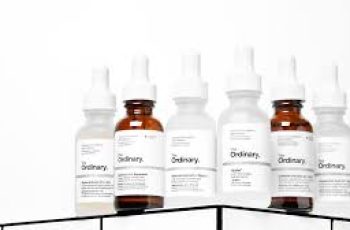
Thiamidol in Skin Care: The Next-Generation Skin Lightening Ingredient
In the fast-evolving world of skincare, new active ingredients frequently emerge with the promise of delivering safer, more effective, and more targeted results.
Among these, one ingredient that has recently attracted significant attention is Thiamidol—a powerful, innovative compound designed to brighten skin and reduce hyperpigmentation.
Considered a potential alternative to hydroquinone, the longtime gold standard in pigmentation treatments, Thiamidol offers hope for those seeking effective skin lightening without the harsh side effects often associated with older ingredients.
In this extensive exploration, we will answer critical questions about Thiamidol, including: What exactly is Thiamidol? How does it work on the skin? What are the potential benefits and risks?
And should it be incorporated into your skincare routine? Let’s take a deep dive into this promising ingredient.
What is Thiamidol?
Thiamidol, chemically known as Isobutylamido thiazolyl resorcinol, is a synthetic molecule specifically engineered for skin lightening purposes.
Unlike many skin brightening agents derived from plant extracts or natural sources, Thiamidol is a lab-created compound, designed to inhibit a key enzyme responsible for melanin production.
Melanin is the pigment that gives human skin its color.
While melanin serves a protective role against ultraviolet (UV) radiation, excessive or uneven melanin production can result in unwanted hyperpigmentation, including dark spots, melasma, and post-inflammatory hyperpigmentation (PIH).
These conditions are often cosmetic concerns that drive many to seek out skin lightening treatments.
Thiamidol’s uniqueness lies in its patented status.
It is currently owned by a single skincare brand, which has limited widespread research but has also spurred interest due to its reported potency and safety profile.
Despite its relatively recent introduction, early clinical studies suggest Thiamidol is at least as effective as hydroquinone, if not more so, while presenting fewer side effects.
How Does Thiamidol Work?
To understand the mechanism of Thiamidol, it’s important to grasp the role of the enzyme tyrosinase in pigmentation.
Tyrosinase is a crucial enzyme that catalyzes the conversion of the amino acid tyrosine into melanin within specialized skin cells called melanocytes.
The overactivity of tyrosinase is a major driver behind hyperpigmentation, which is why many skin lightening agents target this enzyme.
Thiamidol functions as a tyrosinase inhibitor, effectively blocking or reducing the activity of this enzyme and thereby decreasing melanin production.
What sets Thiamidol apart from other inhibitors is its unique chemical structure composed of three key components:
Resorcinol Group: This chemical structure includes a benzene ring with two hydroxyl (-OH) groups, which is well-documented in skin science for its tyrosinase inhibiting properties.
Resorcinol derivatives have long been recognized as effective skin brighteners.
Thiazole Ring: A sulfur- and nitrogen-containing five-membered ring that is noted in scientific literature for its potential anti-inflammatory and antimicrobial activities.
Although these effects have not been conclusively proven in the context of Thiamidol’s use, they suggest possible additional skin benefits beyond pigmentation control.
Isobutylamide Component: This part of the molecule is related to compounds involved in protein and collagen synthesis.
Amides like this can play roles in skin barrier repair and collagen formation, which may imply future benefits in skin texture and resilience, though current research primarily focuses on pigmentation.
While the chemical makeup of Thiamidol suggests a multifunctional profile, clinical evidence so far supports its role mainly as a skin lightener through tyrosinase inhibition.
Benefits of Thiamidol
Thiamidol brings several compelling advantages to skin care, especially for individuals dealing with pigmentation issues:
Potent Skin Lightening:
Numerous studies have demonstrated Thiamidol’s effectiveness in treating hyperpigmentation.
Including post-inflammatory hyperpigmentation (PIH)—those stubborn dark spots left behind after acne, eczema, or skin trauma—and melasma, a chronic pigmentation disorder often exacerbated by hormones and sun exposure.
Thiamidol works by reducing existing pigmentation and preventing the formation of new spots.
Prevention of Pigmentation Formation:
Because it targets the very enzyme responsible for melanin production, Thiamidol can be used proactively to prevent the development of new pigmentation.
This is especially useful for those prone to sun-induced dark spots or uneven skin tone.
UVB Radiation Protection:
Emerging evidence indicates that Thiamidol may mitigate pigmentation changes caused by UVB radiation.
This suggests it could serve as an adjunct ingredient in sunscreens or after-sun care products to protect the skin from sun-triggered pigmentary damage.
Gentle and Suitable for Sensitive Skin:
One of the major drawbacks of hydroquinone is that it can cause irritation, redness, and stinging sensations, especially in sensitive skin.
In contrast, Thiamidol is generally well-tolerated, causing less irritation, which expands its usability to people with reactive or delicate skin types.
Potential Side Effects and Safety Considerations
Despite promising efficacy and tolerability, no ingredient is without potential downsides. Here are some points to consider regarding Thiamidol:
Mild Irritation Possible:
Some users, particularly those with very sensitive skin, have reported mild contact dermatitis or irritation, particularly when using products with high concentrations or applying excessively.
Risk of Uneven Lightening:
Since Thiamidol is a powerful tyrosinase inhibitor, careless application on areas without hyperpigmentation might lead to unintended lightening or patchiness. Precision in application is key.
Limited Long-Term Safety Data:
As a relatively new compound, Thiamidol has not yet undergone comprehensive long-term safety reviews by major independent bodies such as the Cosmetic Ingredient Review Panel (CIR) or the Environmental Working Group (EWG).
Although small studies and current clinical experience suggest safety, some clinicians advocate waiting for further research before widespread adoption.
Thiamidol vs. Hydroquinone: A Comparison
Hydroquinone has been the gold standard in skin lightening for decades, but its use is fraught with controversy. Though effective, hydroquinone can cause side effects like:
Irritation and stinging
Paradoxical skin darkening known as ochronosis
Concerns about systemic absorption and potential carcinogenicity
Thiamidol addresses many of these issues by:
Demonstrating equal or greater effectiveness in tyrosinase inhibition
Exhibiting fewer adverse reactions and less irritation
Showing no evidence of carcinogenic potential or significant systemic absorption
For these reasons, Thiamidol is viewed by many experts as a safer, gentler alternative and potentially the next-generation replacement for hydroquinone.
Thiamidol for Melasma and Post-Inflammatory Hyperpigmentation
Melasma is a complex pigmentation disorder characterized by large, irregular brown patches on the face. Traditional treatments can be harsh and difficult to tolerate long-term.
Clinical trials with Thiamidol have shown it to be effective in reducing melasma pigmentation, often matching or exceeding hydroquinone’s performance while maintaining a better safety and tolerability profile.
This makes Thiamidol a promising option for patients who cannot tolerate hydroquinone’s side effects.
Post-inflammatory hyperpigmentation (PIH), commonly resulting from acne, injury, or inflammation, also responds well to Thiamidol treatment.
By effectively suppressing melanin production, Thiamidol helps fade these spots and restore an even skin tone.
Because it rarely causes irritation or stinging, Thiamidol is especially suited to those who may have struggled with other, more irritating treatments.
Should You Try Thiamidol?
If you experience stubborn dark spots, melasma, or PIH, and are looking for alternatives to hydroquinone, Thiamidol could be an excellent ingredient to consider.
Its combination of potency and gentleness makes it appealing, particularly for sensitive skin types.
However, because Thiamidol is still relatively new, it is advisable to consult a dermatologist or skincare professional who can evaluate your skin type, pigmentation concerns, and recommend the best regimen.
Personalized advice ensures you use the right concentration and complementary products for optimal results.
Final Thoughts
Thiamidol represents a breakthrough in skin lightening science.
As a potent, well-tolerated tyrosinase inhibitor, it effectively targets hyperpigmentation with a safety profile that appears superior to older agents like hydroquinone.
Its benefits extend beyond merely fading dark spots, potentially aiding in preventing new pigmentation and protecting against UVB-induced damage.
While more long-term safety studies are eagerly awaited, the current research and user experience are encouraging.
For those seeking effective and gentle skin brightening options, Thiamidol offers a promising new avenue.
If you’re interested in whether Thiamidol fits your unique skin needs, consider taking a personalized skin quiz to determine your Baumann Skin Type.
This assessment can guide you towards tailored skincare routines that may include Thiamidol-based treatments, helping you achieve brighter, more even-toned skin safely and effectively.


